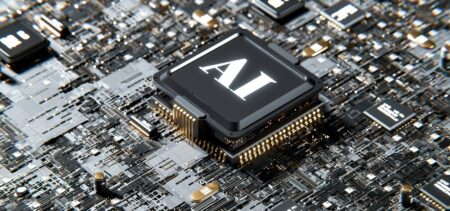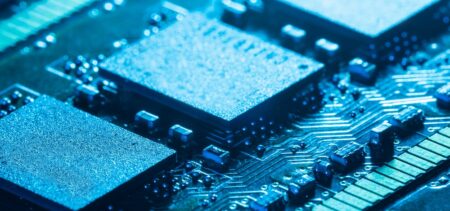IoT is a revolution that is reshaping how we think about networking and connectivity. Imagine a world where your coffee maker knows when to start brewing, your thermostat adjusts itself for optimal comfort, and your car communicates with traffic lights to ease your commute. This isn’t science fiction; it’s the reality of IoT. By connecting everyday objects to the internet, IoT is creating a more interconnected and efficient world.
But why is this important? In an era where efficiency, automation, and data-driven decisions are key, IoT stands as a cornerstone. It’s changing how industries operate, enhancing customer experiences, and even transforming city infrastructures. IoT is not just changing things; it’s redefining how we interact with technology. In this article, we’ll take a closer look at the essence of the IoT revolution and its significance in modern society.
IoT’s Impact on Traditional Networks
Picture billions of devices, from smart refrigerators to industrial sensors, all clamoring for a slice of the network pie. It’s not just the sheer number that’s staggering, but also the diverse nature of these devices. Each has its own unique communication needs – some constantly transmit data, like security cameras, while others, like soil moisture sensors in agriculture, only send data sporadically.
This surge in connectivity demand is a game-changer. Traditional networks, which were primarily designed for human-centric communication (think emails, video calls, and web browsing), are now facing a new kind of traffic. It’s akin to a quiet suburban road suddenly facing the hustle and bustle of city traffic. These networks need to handle not just more connections, but also a different type of data traffic. IoT devices often communicate in short, frequent bursts, which can be quite different from the longer, more sustained data exchanges in human communications.
The Strain on Traditional Network Infrastructures
The strain on traditional network infrastructures is like having an old bridge designed for cars, now being used by heavy trucks. The architecture of traditional networks isn’t optimized for the high-density, low-power communication that IoT devices require. We’re seeing bottlenecks and inefficiencies, much like traffic jams during rush hour.
Why is this happening? Well, traditional networks were engineered with a centralized model in mind. Data travels back and forth between the device and a central data center or cloud. With IoT, this model is becoming less practical. Imagine every smart light bulb or temperature sensor in your city sending data to a cloud server and back for every minor adjustment – it’s highly inefficient and can lead to significant delays.
This is where the challenge lies. We’re not just adding more devices to the network; we’re fundamentally changing the nature of network traffic. It’s a bit like switching from sending letters to sending millions of postcards – each with just a little bit of information, but collectively, they add up to a massive volume of traffic.
The Need for Scalability and Flexibility
In the world of IoT, networks need to be like elastic bands, stretching to accommodate the ever-growing number of devices, and flexing to meet various data requirements. Scalability is crucial. As more devices come online, the network must expand seamlessly to support them. This is not just about handling more data; it’s about managing a more complex network topology.
Flexibility is equally important. Different IoT applications have different needs. A self-driving car, for instance, requires real-time data transmission for safety-critical decisions, while a smart meter might only need to send data once a day. The network needs to adapt to these varying requirements without skipping a beat.
To meet these challenges, we’re seeing innovations like software-defined networking (SDN) and network functions virtualization (NFV). These technologies allow networks to be more dynamic, automatically adjusting to changing traffic patterns and device requirements. It’s like having a smart traffic control system that can instantly reroute traffic based on current conditions, ensuring everything flows smoothly.
IoT and Edge Computing
Think of edge computing as the local coffee shop of data processing – it’s right there in your neighborhood, ready to serve up what you need, fast. In the context of IoT, this means processing data close to where it’s being generated, rather than sending it all the way to a distant data center or cloud.
For example, your smartwatch tracks your health data every single day. Rather than sending all this data to a remote server for processing, it processes the data right there on your wrist. That’s edge computing in action. It’s like having a mini data center in your device or nearby. This setup is crucial for IoT devices, which often generate vast amounts of data. Processing this data locally reduces the burden on long-distance networks and speeds up response times.
Reduced Latency and Improved Responsiveness
Latency is the time it takes for data to travel from its source to its destination. In the world of IoT, reducing latency is like cutting down the commute time in rush hour traffic. It’s all about getting data where it needs to go, faster.
This speed is crucial for certain IoT applications. Take autonomous vehicles, for instance. These cars need to process information about their surroundings in real-time to make split-second decisions. There’s no time to send data to a cloud server and wait for a response. By processing data on the edge – close to where it’s collected – response times are dramatically improved. It’s like having a reflex action, quick and efficient.
Security Challenges in IoT Networks
Let’s talk about something super important in the IoT world: security. You know how you put a lock on your bike? Well, think of IoT devices like bikes parked all over the city. Each one of these devices needs a lock – that’s security in the IoT context.
Here’s the catch: many IoT devices weren’t built with security as a top priority. They’re like bikes with flimsy locks. Why? Because when everyone was excited about making these devices smart and connected, not enough thought went into how they might be vulnerable to hacks or breaches.
Cybersecurity Threats and Risks
Now, onto the dark side of the internet: cybersecurity threats and risks. It’s like having a bunch of sneaky burglars who are constantly finding new ways to pick the locks on your bike. These cyber threats are evolving and becoming more sophisticated, and with IoT devices mushrooming everywhere, the attack surface is just getting bigger.
You’ve got malware that can infect devices, ransomware that can lock them down, and phishing attacks that can trick users into giving up sensitive information. And with IoT, it’s not just about data theft. If someone hacks into a critical system, like power grids or transportation networks, the consequences can be catastrophic.
5G and IoT Synergy
So, what’s the big deal with 5G? It’s like the superhighway of data. 5G networks are way faster than their predecessors, 4G networks. We’re talking about going from streaming a video in decent quality to downloading an entire HD movie in seconds. But speed isn’t the only trick up 5G’s sleeve. It also has way lower latency. With 5G, it’s like having almost no lag at all, which is super important for things that need real-time responses, like autonomous vehicles or remote surgery in healthcare.
Enabling the Massive IoT Ecosystem
Here’s where it gets even more interesting. 5G isn’t just about speed and low latency; it’s also about connectivity – connecting a massive number of devices simultaneously. Think of a music festival with tens of thousands of people, all using their phones at the same time, without any network issues. Now apply that to IoT devices. With 5G, networks can handle a huge number of connections per square kilometer, way more than 4G.
Implications for IoT Applications and Connectivity
So, what does all this mean for IoT applications and connectivity? Basically, it opens up a world of possibilities. With 5G’s high speed, low latency, and massive connectivity, IoT devices can communicate and share data more efficiently than ever before.
Take autonomous vehicles, for instance. With 5G, these vehicles can receive and process data incredibly fast, making real-time decisions and communicating with other vehicles and infrastructure to improve safety and traffic flow.
Or think about smart cities. 5G can enable real-time monitoring and management of everything from traffic and public transport to energy use and environmental sensors. This means cities can be more responsive and efficient, leading to better services and quality of life for residents.
Final Thoughts
The IoT revolution, much like the internet revolution before it, is reshaping our world in ways we are only beginning to understand. We’re moving from a world where connectivity was a luxury to one where it’s a fundamental part of every aspect of our lives. The implications of this metamorphosis are profound, affecting everything from individual privacy to global economics.
What’s exciting is that we’re not just passive observers of this change; we’re active participants. Whether we’re developing new technologies, implementing IoT solutions in our businesses, or simply using IoT devices in our daily lives, we’re all part of this transformation.
The story of IoT and networking is still being written, and its chapters are filled with innovation, challenges, and endless possibilities. We’re not just connecting devices; we’re connecting ideas, people, and opportunities. The future is not just smart; it’s interconnected in ways that can enhance our lives and propel us towards a more integrated and sustainable world.
























